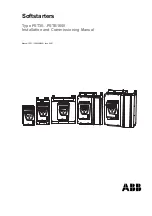
JATO 3.3 • 13
technique will keep your model closer to you, making it easier to
see and control.
No matter how fast or far you drive your model, always leave
adequate space between you, the model, and others. Never
drive directly toward yourself or others.
Steering Sensitivity (Exponential)
The Multi-Function knob on the TQi transmitter has been
programmed to control Steering Sensitivity (also known as
exponential). The standard setting for Steering Sensitivity is
“normal (zero exponential),” with the dial full left in its range of
travel. This setting provides linear servo response: the steering
servo’s movement will correspond exactly with the input from the
transmitter’s steering wheel. Turning the knob clockwise from center
will result in “negative exponential” and decrease steering sensitivity
by making the servo less responsive near neutral, with increasing
sensitivity as the servo nears the limits of its travel range. The farther
you turn the knob, the more pronounced the change in steering
servo movement will be. The term “exponential” comes from this
effect; the servo’s travel changes exponentially relative to the input
from the steering wheel. The exponential effect is indicated as a
percentage—the greater the percentage, the greater the effect. The
illustrations below show how this works.
Normal Steering Sensitivity (0% exponential)
In this illustration, the
steering servo’s travel (and
with it, the steering motion
of the model’s front wheels)
corresponds precisely with
the steering wheel. The
ranges are exaggerated for illustrative purposes.
Decreased Steering Sensitivity (Negative Exponential)
By turning the Multi-
Function knob clockwise,
the steering sensitivity of
the model will be decreased.
Note that a relatively large
amount of steering wheel
travel results in a smaller
amount of servo travel. The
farther you turn the knob, the more pronounced
the effect becomes. Decreased steering sensitivity
may be helpful when driving on low-traction surfaces, when
driving at high speed, or on tracks that favor sweeping turns where
gentle steering inputs are required. The ranges are exaggerated for
illustrative purposes.
Experiment! Try varying degrees of exponential. It’s easy to go
back to “zero” if you don’t like the effect. There’s no wrong way to
adjust exponential. Any setting that makes you more comfortable with
your model’s handling is the “right setting.”
TQi Binding Instructions
For proper operation, the transmitter and receiver must be
electronically ‘bound.’
This has been done for you at the factory.
Should you ever need to re-bind the system or bind to an additional
transmitter or receiver, follow these instructions. Note: the receiver
must be connected to a 4.8-6.0v (nominal) power source for binding
and the transmitter and receiver must be within 5 feet of each other.
1. Press and hold the transmitter’s SET button as you switch transmitter
on. The transmitter’s LED will flash red slowly. Release the SET button.
2. Press and hold the receiver’s LINK button as you switch on
the model. Release the LINK button.
3. When the transmitter and receiver’s LEDs turn solid green, the system
is bound and ready for use. Confirm that the steering and throttle
operate properly before driving your model.
SETTING UP THE ANTENNA
The receiver antenna has been set up
and installed from the factory.
When installing the antenna, first slide
the antenna wire into the bottom of
the antenna tube until the white tip of
the antenna is at the top of the tube
under the black cap. Insert the base of
the tube into the antenna post. Take
care not to crimp the antenna wire.
Slide the crimp nut over the antenna
tube and screw it onto the antenna
post. Use the supplied tool to tighten
the crimp nut on the post just until the
antenna tube is securely in place. Do
not overtighten or crush the antenna
wire against the chassis.
Do not bend or
kink the antenna wire! See the sidebar
for more information. Do not shorten the antenna tube.
Automatic Fail-Safe
The TQi transmitter and
receiver are equipped with
an automatic fail-safe system
that does not require user
programming. In the event
of signal loss or interference,
the throttle will return to
neutral and the steering will
hold its last commanded
position. If Fail-Safe activates
while you are operating
your model, determine the
reason for signal loss and
resolve the problem before
operating your model again.
Turning Range
at Transmitter
Effective Turning
Range on Model
Antenna
Tip
Antenna
Tube
Antenna
Crimp Nut
Antenna
Wrench
Antenna
Post
To prevent loss of radio range,
do not kink or cut the black wire,
do not bend or cut the metal tip,
and do not bend or cut the white
wire at the end of the metal tip.
Correct
No
No
No
TRAXXAS TQ
i
RADIO SYSTEM














































